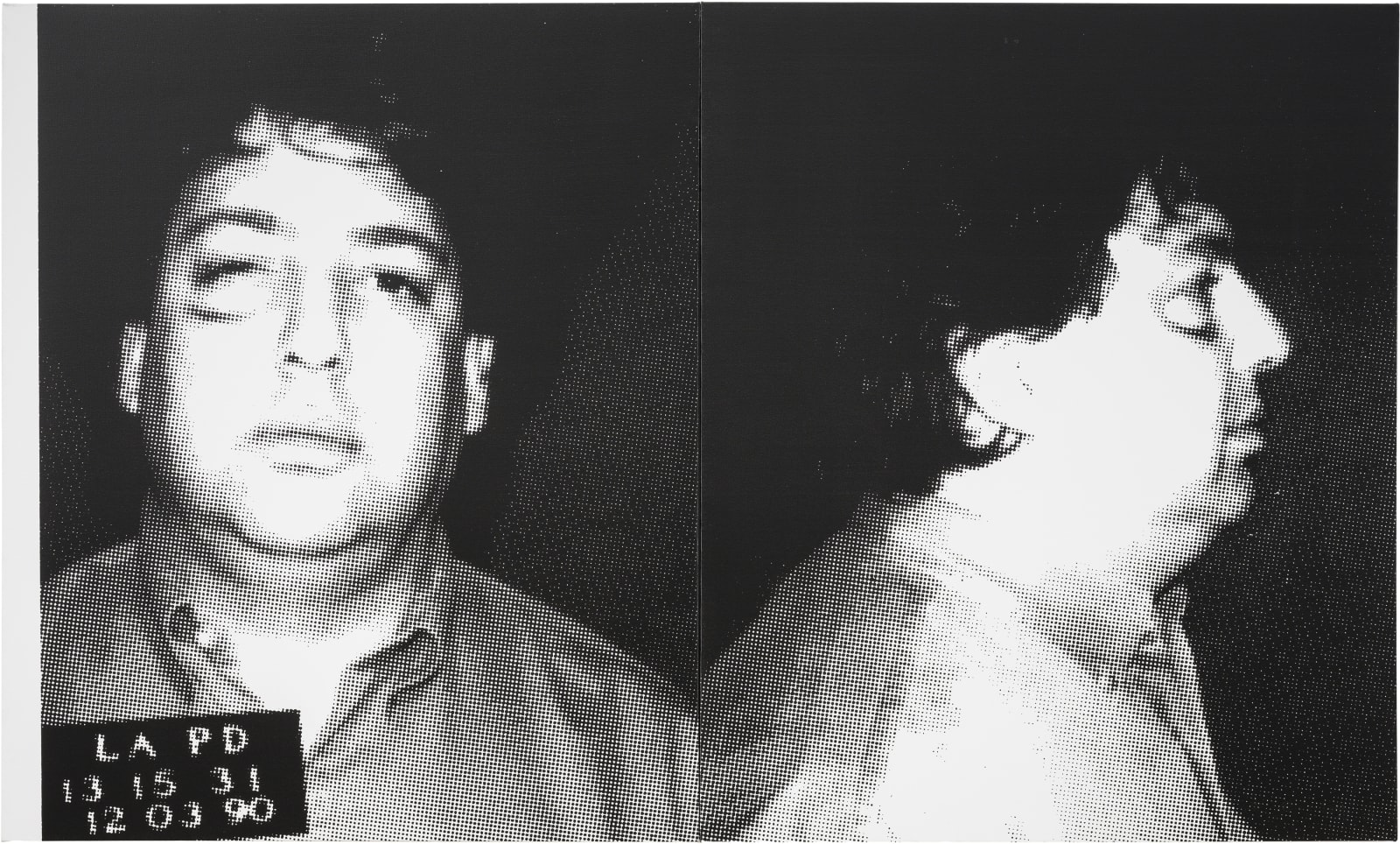-
Artworks
Deborah Kass
Paul S., 1999Silkscreen and acrylic on canvas48 x 80 x 1 1/2 in
121.9 x 203.2 x 3.8 cm7845Further images
Perhaps Kass' least known Warhol appropriations belong to her Most Wanted, series. Subverting Warhol's controversial 1964 series Thirteen Most Wanted Men, which was based on NYPD photos of actual criminals,...Perhaps Kass' least known Warhol appropriations belong to her Most Wanted, series. Subverting Warhol's controversial 1964 series Thirteen Most Wanted Men, which was based on NYPD photos of actual criminals, Kass bypasses the ethical question of featuring unwilling subjects by featuring images of her own peers and colleagues, theatrically staged to resemble Warhol's criminals. These visually arresting photos are an art world time capsule, capturing pivotal moments in the careers of Thelma Golden, Paul Schimmel, Kellie Jones, Robert Storr, Donna De Salvo and Terrie Sultan.
Warhol's original application of the images instigated some amount of controversy, particular surrounding an unexpected episode of censorship. Set to debut as a massive mural titled "Thirteen Most Wanted Men" as part of the 1964 World's Fair in Queens, New York, the total image ended up abruptly and unceremoniously censored. Warhol was informed shortly before the fair opened that he had only 24 hours to remove or replace the mural. After his initial solution was rejected (25 portraits of the fair's president), Warhol accepted that the work would be destroyed and it was painted over with aluminum house paint. Critics past and present have comment on the irony that a work pertaining to criminals was legally challenged, with some speculating that Warhol may have intended for the work to draw controversy. Warhol would reuse the screens created for the mural to create paintings on canvas which would later be shown at Sonnabend Gallery in the later 1960s.
Kass's appropriation similarly plays with a set of ironies, dual interpretations abound when considering content and placement of the work. Images of exhibition curators to be curated into art exhibitions, images of art collectors to be bought and collected as art. At contrast with Warhol's appropriations of government documents, Kass's series instead had volunteers, the individuals involved allowing themselves to be photographed in a collaborative gesture, even full well knowing that they were being depicted as criminals.1of 2









